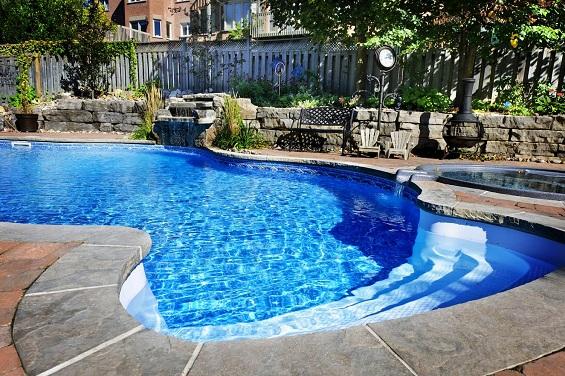A swimming pool is a wonderful addition to any home, providing a refreshing escape during the hot summer months and a source of relaxation and enjoyment for family and friends. However, over time, the surface of your pool can deteriorate due to constant exposure to chemicals, sunlight, and wear and tear. When this happens, it may be time to consider resurfacing your pool. In this article, we will cover everything you need to know about when to resurface your pool and why it’s essential for the longevity and aesthetics of your swimming pool.

Everything You Need to Know About When to Resurface Your Pool
Signs of Wear and Damage
One of the key indicators that your pool may need resurfacing is visible signs of wear and damage on the pool surface. These signs can include cracks, chips, rough patches, and discoloration. Inspect your pool regularly and look for any signs of deterioration, as they can worsen over time and lead to more significant problems if left untreated.
Rough and Uneven Texture
If you notice that the surface of your pool has become rough and uneven, it may be time to consider resurfacing. Over time, the chemicals used to maintain water balance, as well as normal wear and tear, can cause the pool surface to erode and develop a rough texture. This not only affects the aesthetics but can also be uncomfortable for swimmers.
Excessive Chemical Usage
If you find yourself using more chemicals than usual to maintain proper water balance, it may be an indication that the pool surface has become porous and is absorbing chemicals. This can lead to increased maintenance costs and difficulty in keeping the water clean and balanced. Resurfacing the pool can restore the smooth, non-porous surface and reduce chemical absorption.
Age of the Pool
The age of your pool is an important factor to consider when determining if it’s time for resurfacing. Most pool surfaces, such as plaster or pebble finishes, have a lifespan of 10 to 20 years, depending on the maintenance and usage. If your pool is reaching or has exceeded this timeframe, it’s a good idea to start considering resurfacing options.
Loss of Aesthetic Appeal
If the appearance of your pool has significantly diminished, it can impact the overall aesthetic appeal of your outdoor space. Stains, discoloration, or a worn-out look can make your pool look uninviting and outdated. Resurfacing allows you to give your pool a fresh, new look, revitalizing its appearance and enhancing the beauty of your backyard.
Structural Integrity
Resurfacing your pool is not just about improving its appearance; it also ensures the structural integrity of the pool. Cracks and other surface damage can worsen over time, potentially leading to leaks and more severe structural issues. Resurfacing not only repairs these damages but also adds a layer of protection to the pool, preventing further deterioration.
Personal Preference
Sometimes, you may decide to resurface your pool simply because you want a change or an upgrade. Whether you want to switch to a different surface material, update the color and design, or incorporate new features, resurfacing gives you the opportunity to customize your pool to your preferences and create a fresh, inviting space.
In conclusion, resurfacing your pool is an important aspect of pool maintenance and ensures its longevity, functionality, and aesthetic appeal. By keeping an eye out for signs of wear, rough texture, excessive chemical usage, and considering the age of your pool, you can determine the right time for resurfacing. Whether it’s to address structural issues, enhance the appearance, or simply embrace a change, resurfacing your pool will provide you with a rejuvenated swimming experience for years to come.